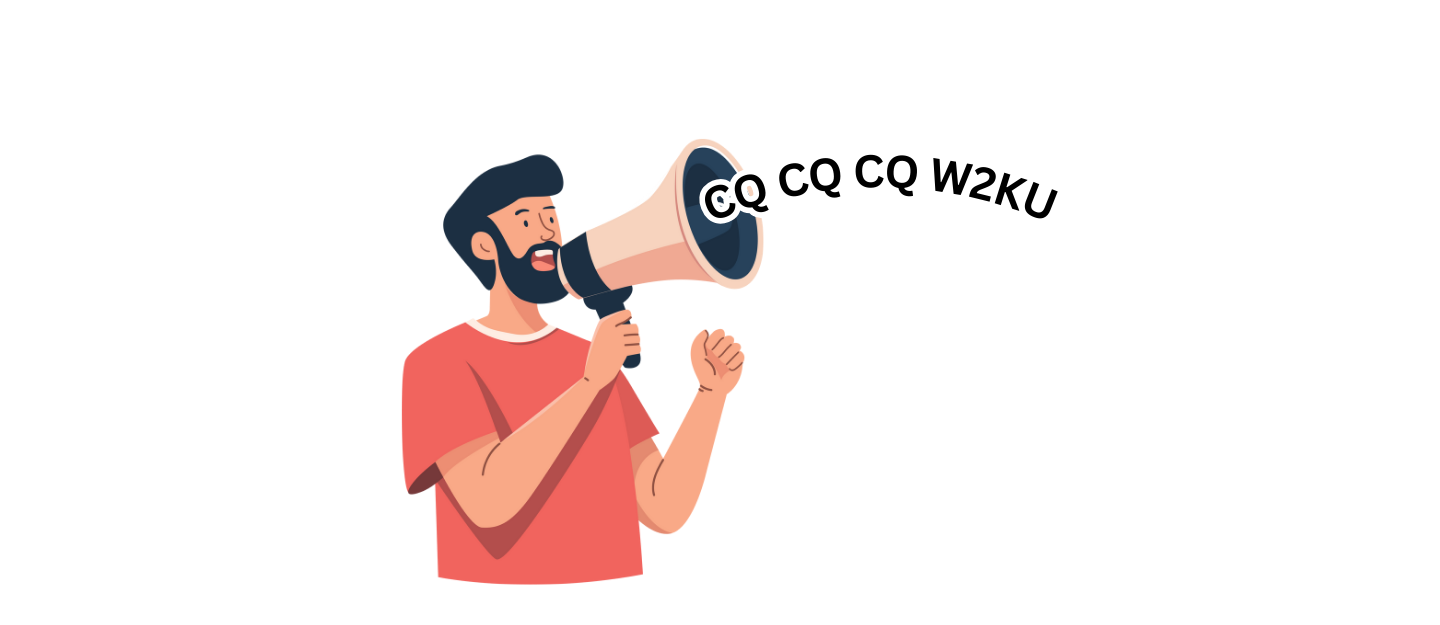Amateur radio operators use the phrase “CQ” as an open invitation to communicate. When you call CQ, you are asking for any station listening to respond. Therefore, calling CQ is not just about transmitting; it is about attracting contacts in the most effective way possible. However, many operators do it incorrectly, and as a result, they either waste time or miss valuable connections.
Choosing the Right Frequency
Before calling CQ, you must select a clear and appropriate frequency. First, tune across the band and listen carefully. If you hear activity, move to another spot. Furthermore, you should follow band plans and avoid calling CQ in sections reserved for specific modes.
Always announce “Is this frequency in use?” or send “QRL?” in Morse code. Then, pause for several seconds to ensure nobody is operating. If you hear silence, you can safely proceed.
Adjusting Your Equipment
Proper equipment settings make a significant difference. Adjust your microphone gain, compression, and power output before transmitting. In addition, verify that your antenna tuner is matched to the frequency.
By doing this, you reduce the chance of poor signal quality. Moreover, ensure that your speech is clear and at a steady pace. A rushed or distorted call often discourages operators from answering.
Structuring the CQ Call
A well-structured CQ increases your chances of success. Do not simply say “CQ CQ.” Instead, include who you are and what you want. For example, say:
“CQ CQ CQ, this is [your call sign], calling CQ and standing by.”
You should repeat your call sign at least twice to ensure clarity. Moreover, speak slowly and with good enunciation. By adding your call sign clearly, you help stations log your details correctly.
When there is no response after multiple calls it is acceptable to lengthen it, just don’t make it to long. For example: say CQ CQ CQ CALLING CQ CALLING CW THIS IS (YOUR CALLSIGN) CALLING CQ and standing by. Remember to add DX if that is what you are looking for.
Using the Right Timing
The timing of your call affects who hears you. During contest weekends, short CQ calls are best because operators want quick contacts. For example CQ CQ (contest designator) and your callsign.
On regular days, you can lengthen your CQ slightly. Furthermore, leave adequate pauses between calls. This allows potential contacts to break in. If you call continuously without breaks, you may miss someone trying to respond.
Considering Band Conditions
Propagation changes constantly, so calling CQ requires awareness of conditions. Check solar activity, gray line openings, and the time of day. For instance, 20 meters often opens during the day, while 40 meters performs better at night. Additionally, pay attention to background noise levels. If conditions are poor, shorten your CQ calls and listen longer. This technique improves your odds of hearing weak signals.
Calling CQ on Voice
When using voice, you need rhythm and clarity. Say your call sign in phonetics, and avoid rushing through. For example, instead of “Kilo One Alpha Bravo,” you should say “Kilo One Alpha Bravo, Kilo One Alpha Bravo, calling CQ and listening.” Furthermore, emphasize consistent tone and volume. If your audio is weak or overdriven, other stations may ignore you.
Calling CQ on CW
Morse code requires its own structure. When calling CQ, send “CQ CQ CQ DE [your call sign] K.” Repeat the call sign multiple times for accuracy. Additionally, use a speed that matches the band conditions. If you send too fast, beginners will not respond. Conversely, if you send too slow, faster operators may skip you. By balancing your sending speed, you appeal to a wider audience.
Calling CQ on Digital Modes
Digital modes such as FT8, PSK31, or RTTY follow specific patterns. In most cases, the software generates a CQ message for you. However, you should still configure your station correctly. Verify that your soundcard levels are set properly, and avoid overdriving the signal. Furthermore, select frequencies designated for digital calling. By respecting band segments, you increase your chances of making clean contacts.
Handling Responses to CQ
Once someone answers your CQ, you must respond promptly and clearly. First, acknowledge the caller’s call sign. Then, give your own call sign again, followed by a signal report. For example: “Kilo One Alpha Bravo, this is November Two Charlie Delta, you are five-nine.” Moreover, allow time for the other operator to confirm. If signals are weak, repeat the call signs slowly. By practicing good operating habits, you demonstrate courtesy and efficiency.
Knowing When to Stop
Calling CQ endlessly without responses wastes energy. If you make ten or more unanswered calls, consider changing tactics. Move to another frequency, or switch to another band or mode. Additionally, check your antenna connections or power settings. Sometimes, silence indicates a technical issue rather than lack of listeners. By troubleshooting efficiently, you avoid frustration.
Tips for More Successful QSOs
Several habits will increase your success rate. First, avoid calling CQ on top of strong stations. Second, use clear phonetics for your call sign. Third, keep your tone friendly and patient. Furthermore, log your contacts immediately after each exchange.
Doing so ensures accuracy and prevents duplication. Finally, remember that courtesy goes a long way. When you show respect for other operators, you often receive it in return.
Conclusion
Calling CQ the right way is both an art and a skill. It requires preparation, patience, and attention to detail. Furthermore, the effectiveness of your CQ depends on frequency choice, timing, and clear communication.
By following best practices for voice, CW, and digital modes, you maximize your chances of meaningful contacts. Ultimately, calling CQ properly enhances your enjoyment of amateur radio while helping you build stronger connections worldwide.
